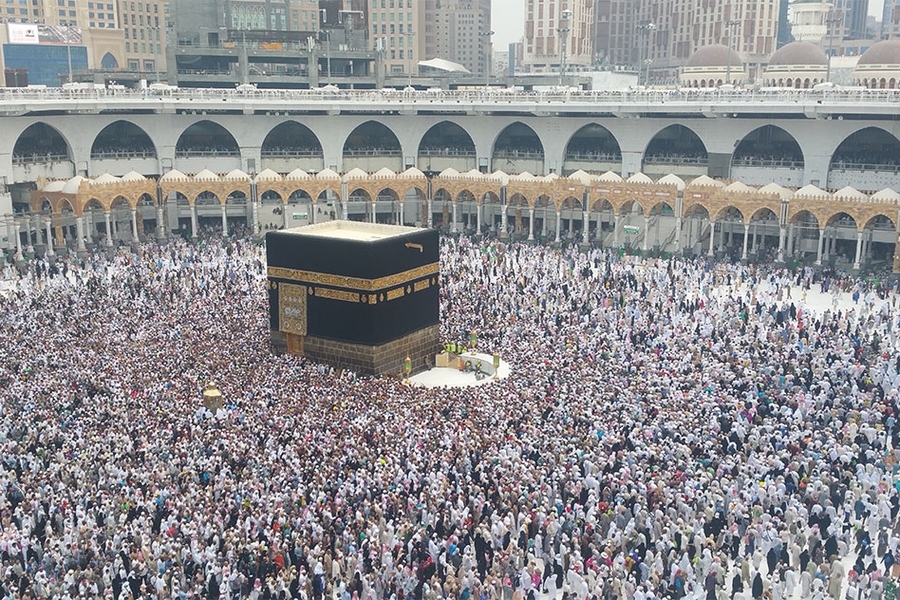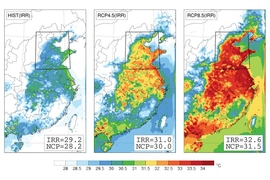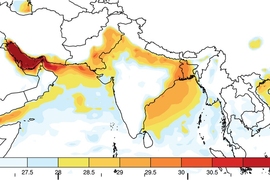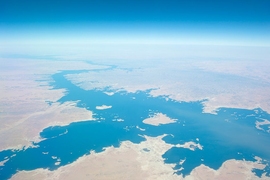For the world’s estimated 1.8 billion Muslims — roughly one-quarter of the world population — making a pilgrimage to Mecca is considered a religious duty that must be performed at least once in a lifetime, if health and finances permit. The ritual, known as the Hajj, includes about five days of activities, of which 20 to 30 hours involve being outside in the open air.
According to a new study by researchers at MIT and in California, because of climate change there is an increasing risk that in coming years, conditions of heat and humidity in the areas of Saudi Arabia where the Hajj takes place could worsen, to the point that people face “extreme danger” from harmful health effects.
In a paper in the journal Geophysical Review Letters, MIT professor of civil and environmental engineering Elfatih Eltahir and two others report the new findings, which show risks to Hajj participants could already be serious this year and next year, as well as when the Hajj, whose timing varies, again takes place in the hottest summer months, which will be from 2047 to 2052 and from 2079 to 2086. This will happen even if substantial measures are taken to limit the impact of climate change, the study finds, and without those measures, the dangers would be even greater. Planning for countermeasures or restrictions on participation in the pilgrimage may thus be needed.
The timing of the Hajj varies from one year to the next, Eltahir explains, because it is based on the lunar calendar rather than the solar calendar. Each year the Hajj occurs about 11 days earlier, so there are only certain spans of years when it takes place during the hottest summer months. Those are the times that could become dangerous for participants, says Eltahir, who is the Breene M. Kerr Professor at MIT. “When it comes in the summer in Saudi Arabia, conditions become harsh, and a significant fraction of these activities are outdoors,” he says.
There have already been signs of this risk becoming real. Although the details of the events are scant, there have been deadly stampedes during the Hajj in recent decades: one in 1990 that killed 1,462 people, and one in 2015 that left 769 dead and 934 injured. Eltahir says that both of these years coincided with peaks in the combined temperature and humidity in the region, as measured by the “wet bulb temperature,” and the stress of elevated temperatures may have contributed to the deadly events.
“If you have crowding in a location,” Eltahir says, “the harsher the weather conditions are, the more likely it is that crowding would lead to incidents” such as those.
Wet bulb temperature (abbreviated as TW), which is measured by attaching a wet cloth to the bulb of a thermometer, is a direct indicator of how effectively perspiration can cool off the body. The higher the humidity, the lower the absolute temperature that can trigger health problems. At anything above a wet bulb temperature of about 77 degrees Fahrenheit, the body can no longer cool itself efficiently, and such temperatures are classified as a “danger” by the U.S. National Weather Service. A TW above about 85 F is classified as “extreme danger,” at which heat stroke, which can damage the brain, heart, kidneys, and muscles and can even lead to death, is “highly likely” after prolonged exposure.
Climate simulations carried out by Eltahir and his co-investigators, using both “business as usual” scenarios and scenarios that include significant countermeasures against climate change, show that the likelihood of exceeding these thresholds for extended periods will increase steadily over the course of this century with the countermeasures, and very severely so without them.
Because evaporation is so crucial to maintaining a safe body temperature, the level of humidity in the air is key. Even an actual temperature of just 90 F, if the humidity rises to 95 percent, is enough to reach the deadly 85 degree TW threshold for “extreme danger.” At a lower humidity of 45 percent, the 85 TW threshold would not be reached until the actual temperature climbed to 104 F or more. (At very high humidity, the wet bulb temperature equals the actual temperature).
Climate change will significantly increase the number of days each summer where wet bulb temperatures in the region will exceed the “extreme danger” limit. Even with mitigation measures in place, Eltahir says, “it will still be severe. There will still be problems, but not as bad” as would occur without those measures.
The Hajj is “a very strong part of the culture” in Muslim communities, Eltahir says, so preparing for these potentially unsafe conditions will be important for officials in Saudi Arabia. A variety of protective measures have been in place in recent years, including nozzles that provide a mist of water in some of the outdoor locations to provide some cooling for participants, and widening some of the locations to reduce overcrowding. In the most potentially risky years ahead, Eltahir says, it may become necessary to severely limit the number of participants allowed to take part in the ritual. This new research “should help in informing policy choices, including climate change mitigation policies as well as adaptation plans,” he says.
The research team included Suchul Kang, an MIT postdoc, and Jeremy Pal, a professor of civil engineering and environmental science at Loyola Marymount University in Los Angeles. The work was supported by a seed grant from the MIT Environmental Solutions Initiative.









